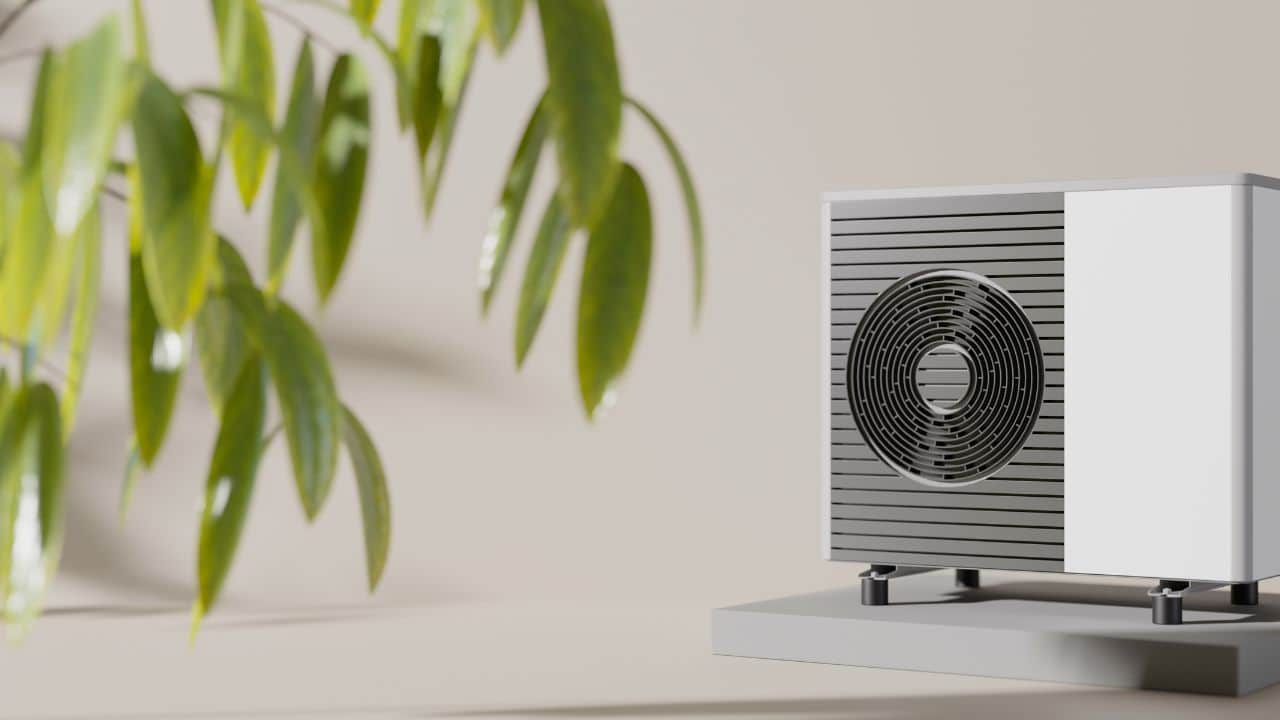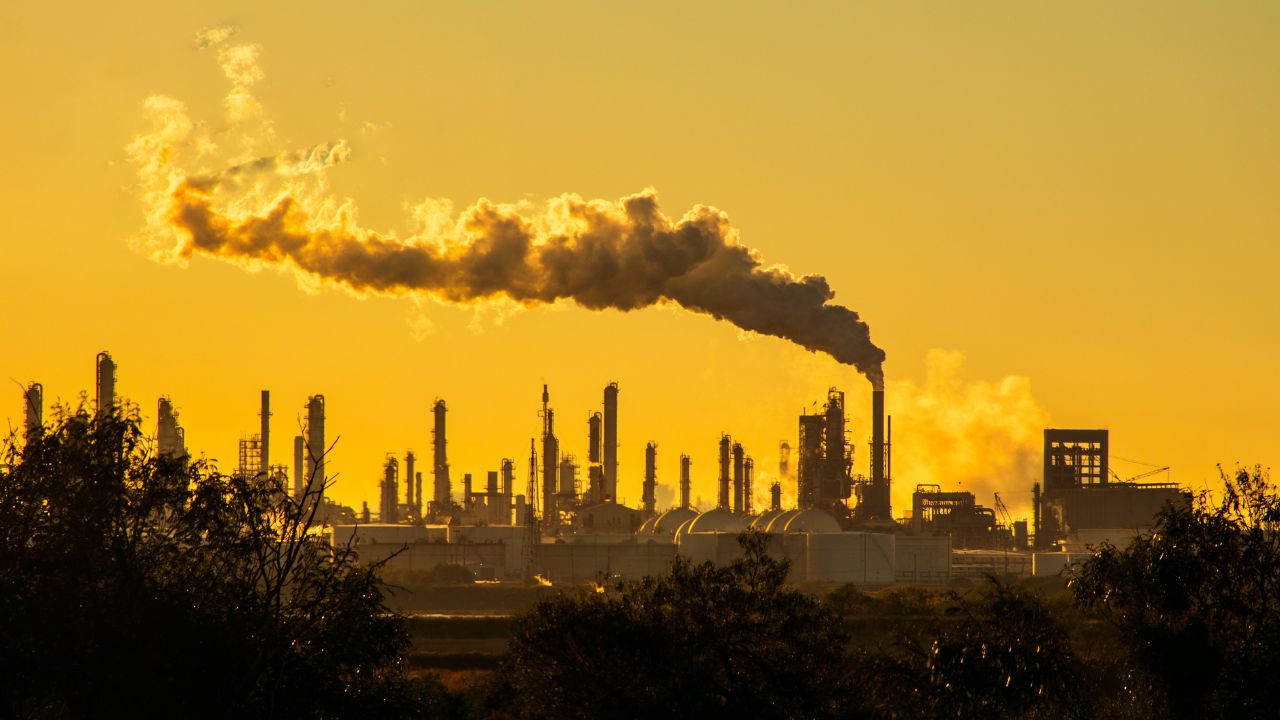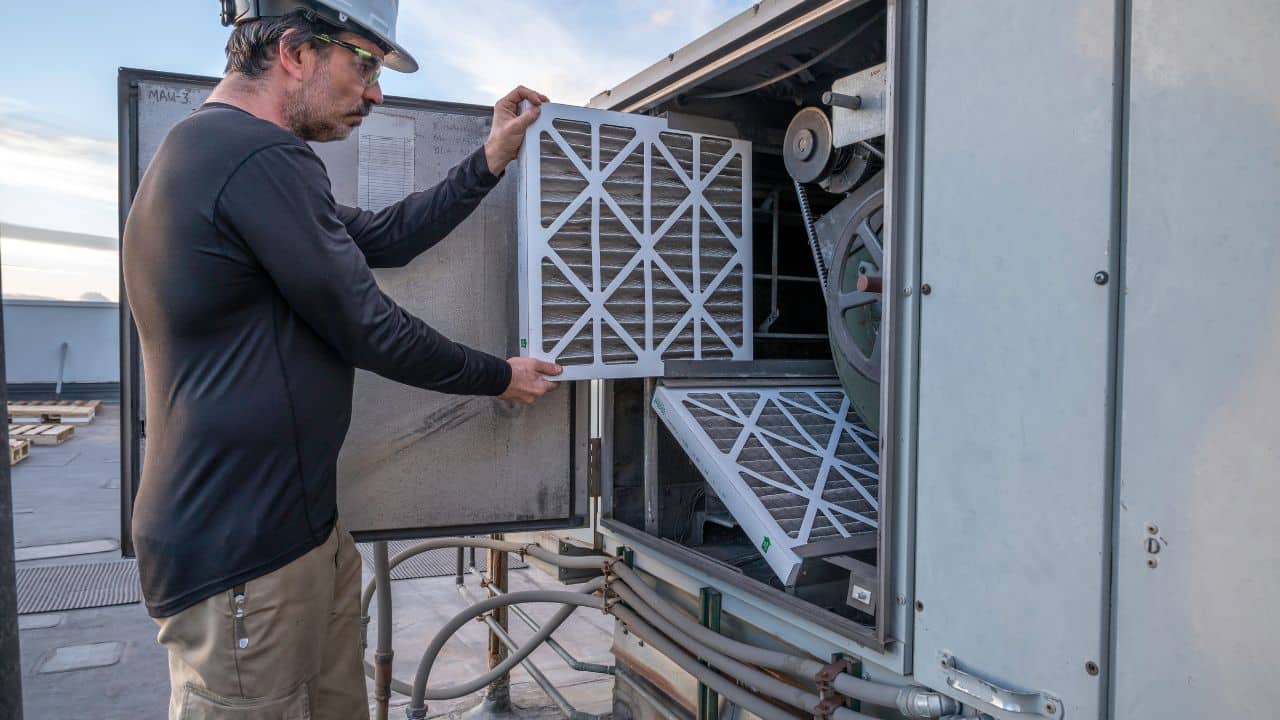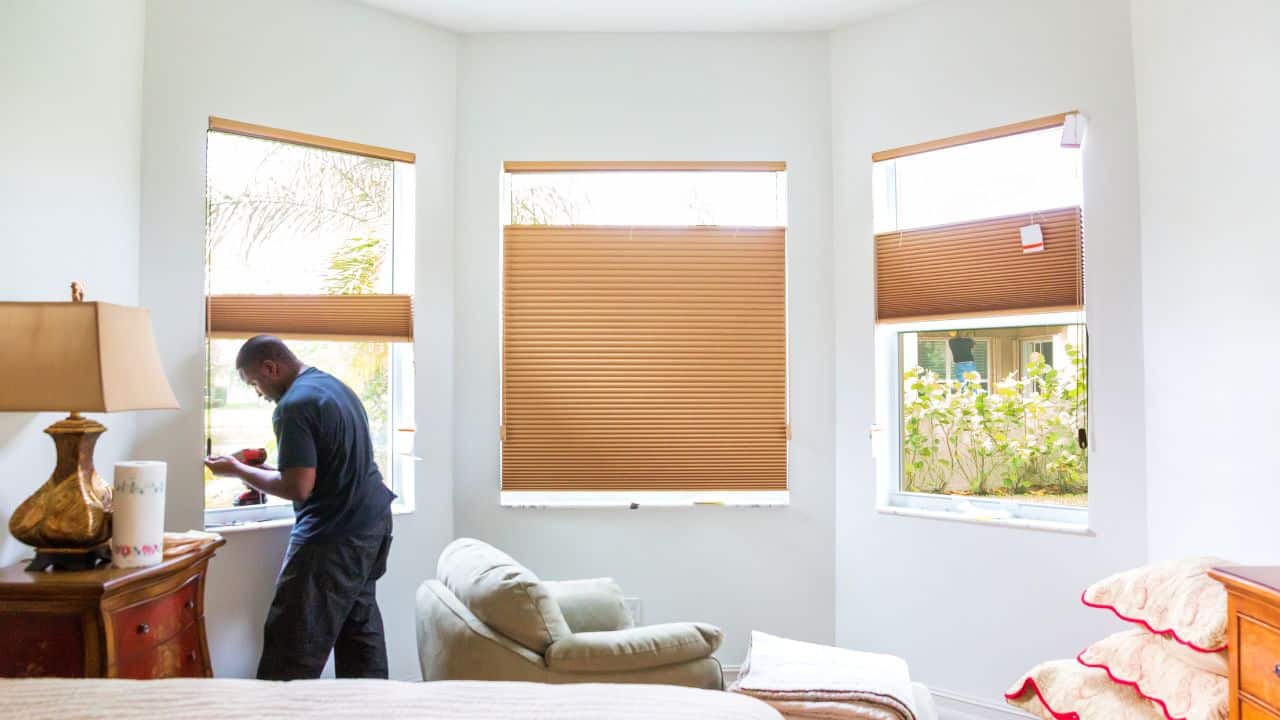Last Updated on September 4, 2023 by Pro Handyman Australia – Editorial Team
The Life-Saving Potential of Air Conditioning
In the face of unprecedented heatwaves, air conditioning has emerged as a critical resource for protecting public health. It serves as a refuge from extreme temperatures, potentially saving lives by providing a controlled climate that shields vulnerable populations from heat-related illnesses.
The Environmental Toll of Traditional Air Conditioning

However, the environmental impact of widespread air conditioning usage is considerable. The energy required to operate these units often comes from non-renewable sources, contributing to greenhouse gas emissions. Additionally, certain types of refrigerants used in air conditioners have been linked to ozone layer depletion. Thus, while air conditioning units might offer immediate relief from sweltering conditions, their long-term environmental implications can’t be ignored.
Exploring Eco-Friendly Alternatives
Fortunately, there are various sustainable alternatives to conventional air conditioning systems. Some of these options leverage natural elements like wind and water to create cooling effects without resorting to energy-intensive mechanical processes. For instance, passive cooling techniques utilize building materials and designs that naturally dissipate heat. Meanwhile, modern cooling technologies are evolving to incorporate eco-friendly refrigerants and energy-efficient components, offering a more sustainable solution for indoor climate control.
The Escalating Challenge of Global Heatwaves
Recent weather data reveals that extreme heatwaves are not isolated incidents but part of an alarming global trend. Locations ranging from Phoenix, Arizona, to California’s Death Valley and even coastal regions in Iran are experiencing record-breaking temperatures. This rise in extreme heat events is closely linked to climate change, and the frequency and severity of such heatwaves are predicted to escalate, particularly if the transition away from fossil fuels is not expedited.
The Growing Dependence on Air Conditioning
As the world grapples with this increase in extreme heat, the reliance on air conditioning as a solution is intensifying. The International Energy Agency claims that the global count of air conditioning units could surge by 244% by the year 2050. Within the United States, a separate study by Climate Central in 2020 suggests that the demand for air conditioning could see a 59% uptick. While it’s true that increased access to air conditioning could be life-saving—especially considering that extreme heat is the deadliest form of extreme weather in the U.S.—this solution is not without its drawbacks.
Accessibility and Energy Consumption: The Dark Side of Air Conditioning

Air conditioning technology comes with two significant challenges: accessibility and energy consumption. Not only is the technology expensive to acquire and operate, but it is also often out of reach for lower-income communities, both domestically and globally. Research has found that less affluent households in the United States are significantly less likely to have access to air conditioning. A separate study from 2019 indicated that between 1.8 and 4.1 billion people in developing countries who regularly face dangerously high temperatures are without cooling technology.
Exploring Sustainable and Accessible Alternatives
Given these challenges, it’s imperative to consider alternative solutions that are both energy-efficient and widely accessible. Options range from passive cooling techniques that utilize eco-friendly building materials and designs, to the development of modern cooling technologies that incorporate energy-efficient components and sustainable refrigerants. These alternative approaches could help mitigate the environmental impact while also extending the benefits of cooling technology to underprivileged communities.
Socioeconomic Barriers to Air Conditioning Access
Recent studies, including one co-authored by a leading energy systems professor, highlight that those who most need air conditioning in the U.S.—primarily lower-income households—often find it inaccessible. The lack of cooling solutions exacerbates public health risks, particularly during heatwaves, and disproportionately affects economically disadvantaged communities.
Strain on Electricity Grids and Public Health
The rising dependency on air conditioning doesn’t only highlight socioeconomic disparities; it also places enormous stress on electricity grids. One study alarmingly suggests that if Phoenix were to experience a simultaneous five-day heatwave and power outage, more than half of the city’s current 1.4 million population could end up requiring emergency medical care.
The Environmental Dilemma: Energy Consumption and Climate Impact

Efforts are underway to make air conditioning units more affordable and to bolster the resilience of electricity grids. However, these appliances present another problem: their significant environmental impact. According to the Intergovernmental Energy Agency, cooling technologies, primarily air conditioners, are poised to be the leading driver of escalating energy demand between now and 2050. This is particularly troubling since the world’s energy source is taken from fossil fuels.
Furthermore, the refrigerants commonly used in traditional air conditioners—hydrofluorocarbons (HFCs)—are greenhouse gases that serve as major contributors to global warming at a rate greater than carbon dioxide. Even newer, supposedly more climate-friendly refrigerants like hydrofluoroolefins (HFOs) come with their own set of ecological drawbacks. Alternative substances like ammonia and propane are also not without risks, posing potential harm to humans if leaked.
Innovations in Cooling Technologies
Companies have begun to introduce newer types of refrigerants, such as R-32, an HFC variant with half the planet-warming potential of older versions. Additionally, experts advocate for innovative strategies to lower indoor temperatures, which could reduce the environmental footprint of air conditioning.
One of the emerging solutions is the electric heat pump, a versatile appliance capable of both heating and cooling homes. Unlike traditional air conditioning units, which are criticized for being “terribly inefficient” by experts in the field of building technology, heat pumps work by transferring hot air out of the home and drawing cooler air inside. This makes them a promising candidate for more energy-efficient and eco-friendly cooling solutions.
The Urgency of Improving Air Conditioning Efficiency
As global demand for air conditioning is predicted to skyrocket, making it the most significant contributor to growing energy needs, the call for more efficient technologies becomes imperative. According to a report from the International Energy Agency, the average air conditioner in use in 2018 was markedly less efficient than the best available technologies. What is even more concerning is that the least efficient models—often found in economically disadvantaged households—consume an excessive amount of energy, making them both environmentally damaging and costly to operate.
Innovations in Efficient Cooling Technologies
Researchers are exploring new ways to revolutionize air conditioner efficiency by separating their cooling and dehumidifying functions. Emerging models incorporate innovative elements such as living membranes or physical desiccants—materials that absorb humidity—reducing the need for energy-intensive procedures to clean and remove moisture from ambient air.
Cost-Effective and Energy-Efficient Alternatives
Fans present a simpler, yet effective, option for cooling homes and consume considerably less energy than air conditioning units. They are particularly beneficial in hot, dry climates where they can provide up to 2°C of temperature relief.
The potential of dehumidifiers as an alternative cooling technology is also being studied. These devices can improve comfort significantly in hot, humid conditions. For instance, basements equipped solely with dehumidifiers can feel much cooler compared to other areas of a home that are hot and humid.
The Role of Swamp Coolers in Energy-Efficient Cooling

Swamp coolers, also known as air coolers, offer another low-energy solution for cooling in hot, dry climates. They operate by circulating air across a cool, wet material and then distributing the cooled, moistened air throughout the home. Comparable to dehumidifiers and fans, swamp coolers are both cost-effective and energy-efficient, making them widely accessible options for home cooling.
Embracing Weatherization for Energy Efficiency and Comfort
The principle of weatherization stands as a crucial strategy for maintaining comfortable temperatures in homes, particularly in economically disadvantaged communities where older structures are prevalent. In many such cases, residents find themselves compelled to set their air conditioning units to maximum levels to combat extreme heat, especially when the home’s doors and windows are not adequately sealed. Implementing weatherization techniques, such as insulating and sealing cracks around windows and doors, can substantially reduce the need for air conditioning, thereby lowering energy consumption and decreasing greenhouse gas emissions.
The Role of Building Materials in Heat Management
The materials used in the construction of homes can have a significant impact on their ability to withstand extreme temperatures. For example, mobile homes and trailers often constructed from heat-absorbing materials like steel or aluminum leave their residents especially vulnerable to the harsh effects of heat. Conversely, using heat-resilient materials like brick and stone can greatly mitigate the risks associated with extreme temperatures, as they absorb and release heat more slowly. Ensuring the availability and affordability of such materials can be a life-saving intervention during heatwaves.
Optimizing Home Design for Natural Cooling
The architectural design of buildings can contribute to their ability to maintain comfortable indoor temperatures without relying on air conditioning. Painting roofs white, for example, can reflect up to 90% of sunlight, thereby significantly reducing indoor heat. Moreover, the strategic use of ventilation, including the installation of wind towers and underlying water ponds, can effectively draw cool air into buildings.
The Importance of Shade in Temperature Control

The availability of shade both inside and outside the home can be remarkably effective in reducing temperatures. Inside, the simple act of drawing opaque curtains can significantly lower the heat. In outdoor community spaces, the planting of trees can make a substantial difference. Neighborhoods abundant in trees can experience temperatures up to 15 degrees cooler than those without. Additionally, rooftop gardens can serve as insulators, preventing hot air from entering buildings, especially in urban “heat islands” where concrete structures absorb and retain thermal energy.
The Importance of Maintenance and Responsible Refrigerant Management
One often overlooked aspect in the quest for more sustainable cooling solutions is the crucial role played by regular maintenance and responsible refrigerant management. Maintaining your air conditioning system isn’t just about prolonging its lifespan; it’s also about ensuring that the system operates at peak efficiency. Regularly scheduled checks can help prevent refrigerant leaks, which are harmful both to the environment and to the system’s cooling efficiency.
In addition to maintenance, the manner in which we dispose of or service air conditioning units must adhere to specific guidelines and regulations. Adherence to these standards ensures that harmful refrigerants are not inadvertently released into the atmosphere, thereby minimizing further environmental damage. Thus, by adopting responsible maintenance and disposal practices, we contribute positively toward reducing the environmental fallout of air conditioning refrigerants.
Rethinking the Necessity of Air Conditioning
While the complete elimination of air conditioning would pose significant risks, especially in regions with consistent high heat and humidity, a strategic approach to cooling could reduce both costs and emissions. In densely populated areas, extensive use of air conditioning units can even elevate outdoor temperatures, creating a feedback loop of heat and energy consumption. Therefore, a multi-pronged approach incorporating various strategies may offer the most effective, socially responsible, and long-term sustainable solutions for combating extreme heat.
Innovations in Environmentally-Friendly Air Conditioning Technologies
A recent development in the field of air conditioning could have far-reaching implications for reducing the technology’s environmental impact. Researchers have successfully created a prototype for an air conditioner that does not rely on hydrofluorocarbons (HFCs), which are potent greenhouse gases. Instead, this new technology uses solid-state refrigerants from a class known as metal-halide perovskites. These refrigerants remain solid throughout their operational lifecycle, avoiding the issue of leaking gases that is common in traditional air conditioning units.
Overcoming Challenges for Consumer Adoption
While the new system shows significant promise in the quest for more sustainable cooling solutions, there are still some challenges that need to be addressed. For instance, the operational pressures required by the new technology are currently too high for conventional consumer air conditioning systems. Research is underway to identify alternative materials that can effectively conduct heat under more practical conditions.
Given the urgency of addressing climate change and reducing greenhouse gas emissions, such innovative approaches to cooling technologies could represent a critical step toward a more sustainable future.
Consumer Influence on the Green Technology Adoption
Consumer behavior plays an instrumental role in facilitating this shift towards more sustainable technologies. When individuals choose air conditioning systems that use environmentally friendly refrigerants, it sends a powerful message to manufacturers. This, in turn, motivates them to further invest in green innovation, setting a positive cycle in motion.
Accountability for a Sustainable Future Is Key
In summary, while the environmental implications of traditional air conditioning technologies are concerning, the tide is beginning to turn with the advent of greener alternatives. Consumers with their purchasing power have the ability to accelerate this change. By consciously selecting more eco-friendly options, we are contributing to a broader, collective effort. This isn’t just about making our own lives more sustainable; it’s about leaving a healthier planet for future generations.
